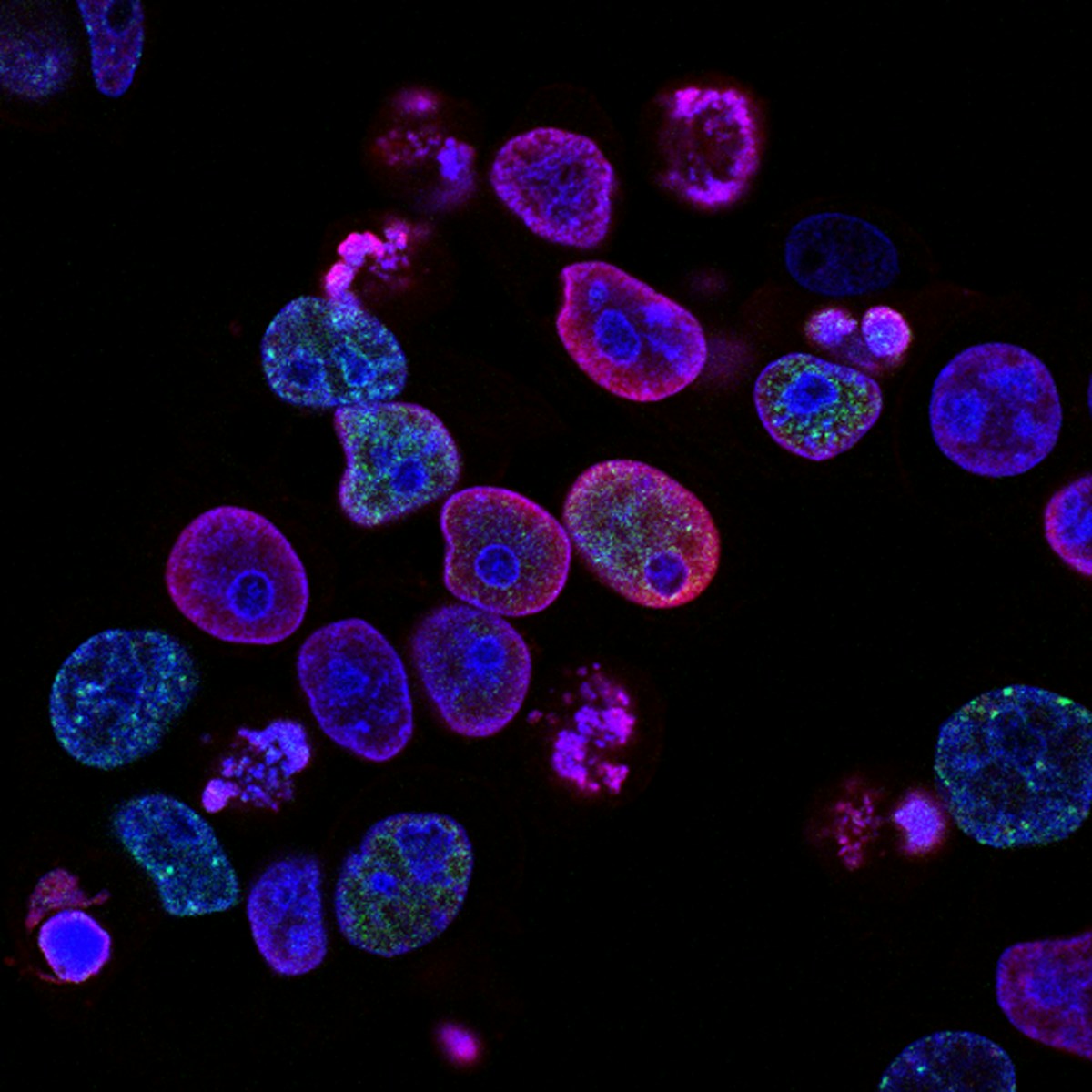Insider Brief
- Researchers report that quantum technologies could help oncology in several ways.
- The team sees potential for quantum improvements in molecular modeling, genomic analysis, medical imaging and quantum sensing.
- The team reported their findings in Nature Cancer.
The power of quantum computers to deliver more medical treatments faster is often listed as a promising use case for quantum computing. A team of University of Chicago Medicine-led researchers say that might just be the beginning for the use of quantum in medicine, and, specifically, oncology.
Quantum technology promises several benefits for oncology, offering capabilities in molecular modeling, genomic analysis, medical imaging, and quantum sensing, the team of scientists report in Nature Cancer. If these quantum technologies advance, the team predicts these tools could significantly accelerate cancer research and treatment.
Quantum technology, which relies on the principles of quantum mechanics, is being explored as a powerful tool in several scientific disciplines, the researchers report. The team lists several potential applications of quantum technology that would be particularly promising for oncology, including enhancing molecular modeling and improving genomic analysis, medical imaging and quantum sensing,

“Quantum technologies holds immense promise for oncology, particularly in drug design and sensing applications in the near-term. The ability to efficiently model molecular interactions could accelerate drug discovery and quantum sensing technologies could offer us the chance to abstract data with significantly higher resolution to understand biological processes— both of which are areas of significant interest right now.
However, quantum computing is still in its early stages and faces substantial challenges, especially in hardware development. To unlock its full potential, close collaboration between the biomedical and quantum technology sectors is essential. We really hope that this paper helps to facilitate that a little bit more.”
Molecular Modeling
Molecular modeling is a crucial aspect of drug discovery and development. Because molecular systems are — at their core — quantum mechanical, traditional computational methods often struggle with managing that complexity. Quantum computers, `however, can simulate molecular behavior with greater accuracy and efficiency. By representing molecules using the quantum states of qubits, quantum computers can handle complex calculations that are infeasible for classical computers, the team reports.
Quantum molecular modeling can accelerate drug discovery by improving virtual screening and lead optimization — a phase in the drug discovery process when researchers refine chemical compounds, known as “leads,”. Quantum-based molecular docking and binding affinity predictions allow for precise modeling of drug-target interactions. This capability is particularly valuable for designing targeted cancer therapies. For example, the paper points out that hybrid quantum-classical algorithms have identified novel inhibitors for the Kirsten rat sarcoma virus (KRAS), a common mutation in various cancers.
The ability to screen millions of small-molecule candidates efficiently and economically could lead to the rapid identification of promising leads for synthesis and laboratory testing. Moreover, quantum techniques can optimize existing drugs by evaluating modifications and derivatives, enhancing current cancer therapies.
Genomics and Multiomics Analysis
Cancer genomics involves scanning for mutations across large genomic regions and analyzing complex gene expression patterns. Quantum algorithms offer a way to search and recognize these genomic features more efficiently than classical methods. Techniques like Grover’s search algorithm can accelerate genomic analyses, potentially leading to faster identification of cancer-related genetic mutations, the researchers report.
Quantum machine learning techniques can uncover multivariate patterns across genomic, gene expression, methylomic, and other omics data linked to tumor characteristics and clinical outcomes. Quantum annealing and the Quantum Approximate Optimization Algorithm (QAOA) can reveal subtle multiomic trends between cancer subtypes, providing insights that might be missed by classical methods.
Quantum heuristics can also navigate the immense combinatorial search spaces involved in understanding genetic interactions in cancer, which classical approaches find challenging. Quantum Boltzmann machines, for instance, can uncover nonlinear dependencies across different omics types, expanding our capacity to analyze vast multiomics data in precision oncology.
Medical Imaging
Quantum technology can significantly enhance medical imaging by improving how quantum data from techniques like MRI, PET and CT scans are processed. These devices rely on quantum effects, such as the manipulation of spin states in MRI. Converting quantum information to classical data often results in loss of detail, which can impede the diagnosis of small tumors or cancer recurrence.
Quantum algorithms, such as quantum phase estimation, can generate higher definition magnetic resonance images and detect finer features, according to the paper. Quantum machine learning models can analyze imaging data to uncover subtle diagnostic and prognostic signatures. By directly processing quantum data, these techniques can improve resolution and enable new imaging capabilities.
Quantum computing also offers substantial improvements for functional, molecular, and metabolic imaging. Quantum algorithms can rapidly analyze tracer dynamics and spatiotemporal patterns in PET scans, enhancing our understanding of cancer metabolism. Simulations of contrast agent interactions and signal processing in MRI and CT can boost the extraction of cancer biomarkers, providing clinicians with more precise diagnostic tools.
Quantum Sensing
The researchers also suggest quantum sensing could give cancer research a boost. Quantum sensors, such as those made from quantum dots, offer high sensitivity and selectivity for non-invasive measurement of biological tissues. Quantum dots can target specific macromolecules and provide photostable, non-cytotoxic sensing at the nanoscale, retaining their properties for extended periods in vivo. This sensitivity allows for detecting minute cellular and metabolic changes, tracking tumor development in situ and potentially in vivo.
Quantum computing can accelerate the processing of quantum sensor data, enabling real-time diagnosis and treatment guidance. For example, nuclear magnetic resonance with specific quantum sensors can detect single molecules and cells, revealing the structure of membrane proteins. This capability promises earlier cancer detection and personalized treatment plans based on continuous monitoring.
Challenges and Future Outlook
Despite its potential, quantum computing in oncology faces significant challenges. Quantum decoherence, caused by qubits interacting with the environment, leads to information loss. Physical errors during gate operations can further degrade computations. Maintaining coherence over many qubits requires extreme precision, making large-scale quantum computations challenging.
Current quantum computing is characterized by noisy intermediate-scale quantum (NISQ) devices, which contain 50-100 qubits but have noise and errors that limit their functionality. Quantum error correction techniques are essential to build fault-tolerant quantum computers capable of running large computations accurately. These techniques involve encoding information redundantly across multiple qubits, allowing recovery of the logical qubit state even if some physical qubits experience noise.
Additionally, the cost and accessibility of quantum computing resources are substantial barriers. As of 2024, using IBM Cloud quantum computing resources costs around $6,000 per hour, limiting access to a few organizations. The high cost of producing cutting-edge quantum hardware and the need for significant research and development investments further constrain widespread use.
Cancer data also pose inherent challenges. Generating comprehensive multiomic data at scale is expensive and logistically complex. Analyzing and interpreting this data requires deep expertise in oncology, statistics, and quantum computational methods, along with interdisciplinary collaboration.
Despite these hurdles, the potential for quantum computing in oncology justifies the current enthusiasm. Near-term successes may come from hybrid classical-quantum approaches that leverage NISQ devices for specialized subroutines within classical workflows. Enhancing molecular docking, improving medical imaging resolution, and extracting genomic patterns are promising applications.
Realizing the full potential of quantum computing for oncology requires multidisciplinary collaboration. Teams spanning quantum computing, cancer biology, clinical oncology, and computational disciplines must co-design tailored quantum-classical hybrid workflows. Developing an integrated quantum-oncology workforce through educational programs and ensuring equitable access to quantum resources and datasets via public-private partnerships are essential.
Overcoming these interdisciplinary challenges is crucial to unlocking the exponential potential of quantum technology, leading to accelerated discovery, early detection, and new frontiers in cancer biology and patient care.


















